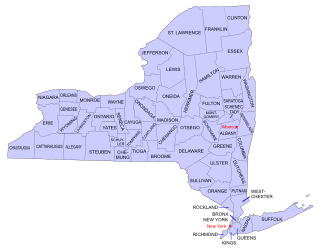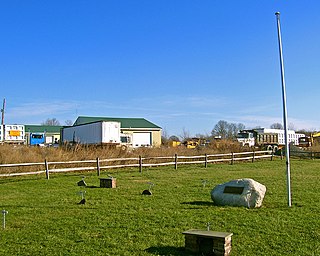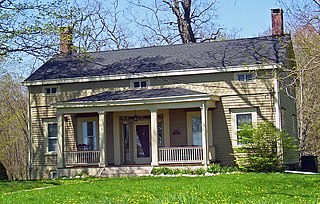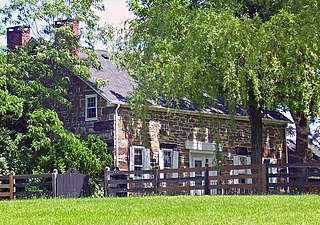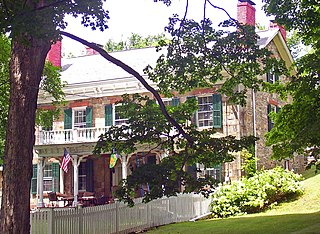This article lacks inline citations besides NRIS, a database which provides minimal and sometimes ambiguous information.(January 2014) (Learn how and when to remove this template message) |
Johannes Miller House | |
House in 2007 | |
| Location | 272 Union St., Town of Montgomery, NY |
|---|---|
| Nearest city | Middletown |
| Coordinates | 41°30′43″N74°15′12″W / 41.51194°N 74.25333°W Coordinates: 41°30′43″N74°15′12″W / 41.51194°N 74.25333°W |
| Area | 3.2 acres (1.3 ha) |
| Built | 1771 |
| Architectural style | Georgian, Federal style, Greek Revival |
| MPS | Montgomery Village MRA |
| NRHP reference # | 80002737 [1] |
| Added to NRHP | November 21, 1980 |
The Johannes Miller House is a Registered Historic Place in the Orange County, New York, Town of Montgomery. It is located on NY 211 just opposite its junction with NY 416 and another Registered Historic Place, the Harrison Meeting House Site and Cemetery. Orange County Airport is nearby.

The National Register of Historic Places (NRHP) is the United States federal government's official list of districts, sites, buildings, structures, and objects deemed worthy of preservation for their historical significance. A property listed in the National Register, or located within a National Register Historic District, may qualify for tax incentives derived from the total value of expenses incurred preserving the property.

Orange County is a county located in the U.S. state of New York. As of the 2010 census, the population was 372,813. The county seat is Goshen. This county was first created in 1683 and reorganized with its present boundaries in 1798.

New York is a state in the Northeastern United States. New York was one of the original thirteen colonies that formed the United States. With an estimated 19.54 million residents in 2018, it is the fourth most populous state. To distinguish the state from the city with the same name, it is sometimes called New York State.
It was built originally as a Georgian in 1771 by Hans Smith, one of the early German settlers of the town. Twenty years later, Miller, a prosperous local businessman, acquired it and rebuilt it in the Federal style. In 1835, his descendants added some Greek Revival elements.

Georgian architecture is the name given in most English-speaking countries to the set of architectural styles current between 1714 and 1830. It is eponymous for the first four British monarchs of the House of Hanover—George I, George II, George III, and George IV—who reigned in continuous succession from August 1714 to June 1830. The style was revived in the late 19th century in the United States as Colonial Revival architecture and in the early 20th century in Great Britain as Neo-Georgian architecture; in both it is also called Georgian Revival architecture. In the United States the term "Georgian" is generally used to describe all buildings from the period, regardless of style; in Britain it is generally restricted to buildings that are "architectural in intention", and have stylistic characteristics that are typical of the period, though that covers a wide range.

The Greek Revival was an architectural movement of the late 18th and early 19th centuries, predominantly in Northern Europe and the United States. A product of Hellenism, it may be looked upon as the last phase in the development of Neoclassical architecture. The term was first used by Charles Robert Cockerell in a lecture he gave as Professor of Architecture to the Royal Academy of Arts, London in 1842.





